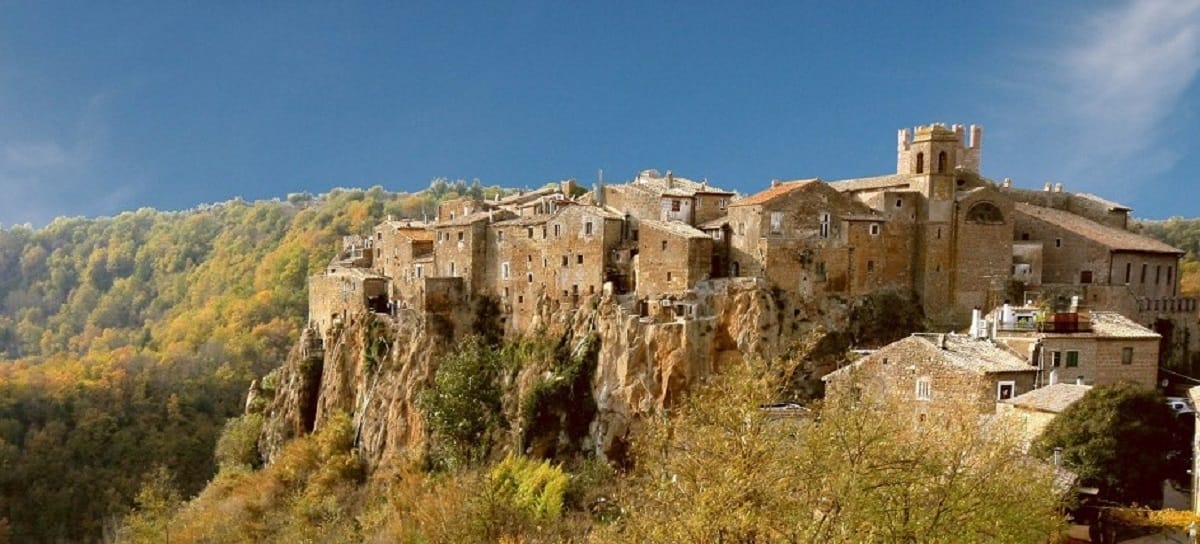
Calcata, Italy: A Guide to One of the Coolest Bohemian Villages
December 1, 2023
The medieval hill town of Calcata, Italy, located just 25 miles (or 40 about kilometers) north of the Eternal City, makes for a fantastic day trip from Rome.
Whether you get to Calcata, Italy via a bus from Rome’s Saxa Rubra bus station or you have a car of your own, when you come around the bend in the road that snakes its way through the hills towards the silhouette of this medieval hill town, prepare to feel a sense of awe. The village, sitting atop a large mound of volcanic tufo stone 450 feet up and surrounded by a verdant valley, is one of the most bewitching in Italy.
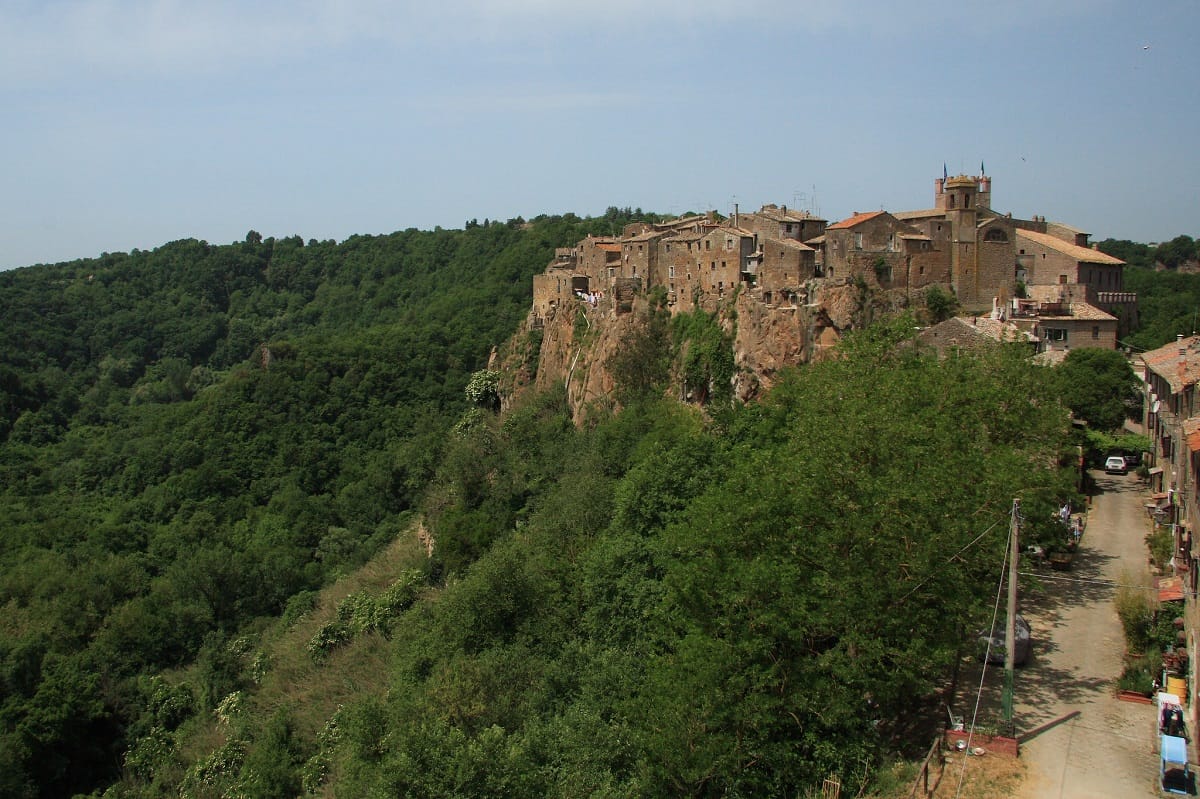
Calcata is a little-known village just to the north of Rome. It’s quirky and fun and full of surprises. Photo credit: Paul Albertella
Which is saying a lot, considering Italy is sprinkled with majestic medieval hill towns that beckon the curious to trudge upward and explore. As romantic as they may seem to us today, hill towns are past symbols of a society gone wrong. Most hill towns in Italy came about after the fall of the Roman Empire when Italy lacked a central ruling authority. As a result, people began congregating on high hills where they built homes and a wall around the periphery for protection (safety in numbers).
Eventually, a ruling aristocrat or lord would seize power and build a palace in the town, where local villagers would accept his position of power in exchange for protection from the often-dangerous outside world.
Table of Contents
ToggleThe “Village of Freaks”
Calcata, which is made out of the same volcanic stone in which it sits, giving the village the appearance that it magically sprung up from the earth in some bygone magical age, is not like many other hill towns in Italy. The residents of Calcata, which, depending on who you ask, number from 70 to 100 denizens, are mostly of the creative variety.
Lurking down the narrow lanes of the village are art galleries, artists’ studios, and restaurants. If you’re in search of daily necessities like toothpaste or milk, you’re in the wrong place; those things are in the neighboring villages. This is, after all, what some people in the region call the “paese di fricchettoni,” the village of freaks.
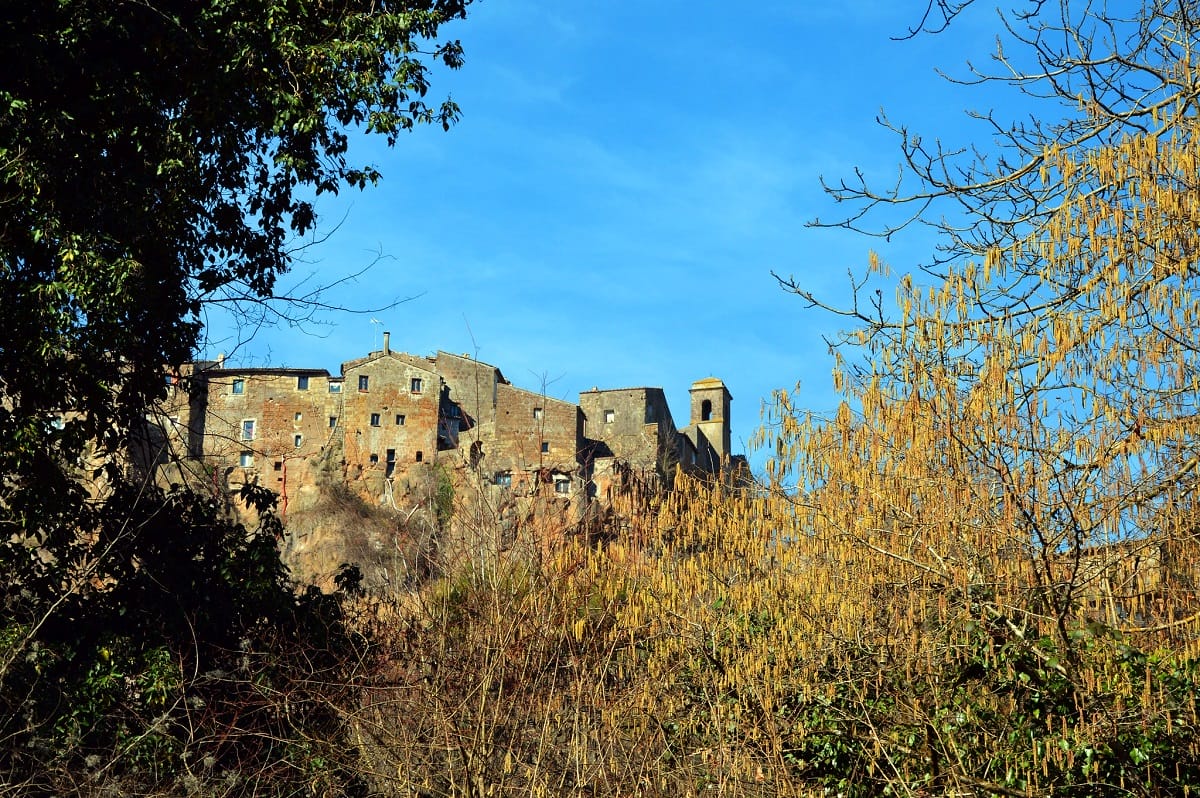
Behind these stone walls lie some very strange tales. Photo credit: Paul Albertella
It all began in the 1930s when the ruling Mussolini government deemed Calcata (which is now referred to as Calcata Vecchia, or old Calcata) to be destroyed for fear its cliffs were crumbling. This turned out to be a cooked up political charge but nonetheless a new village was being built about a half mile away. And when that inhabitation was finally finished in the late 1960s, now called Calcata Nuova (or, new Calcata), the old residents gravitated there, leaving their ancestral homes abandoned and, at some point in the future, to be destroyed by the government.
That’s when something interesting happened: hippies and artists from all over Italy discovered the village. They bought apartments for cheap from the old residents. They fixed up the place. And eventually they had Calcata’s death sentence rescinded. Which is why today Calcata is like a village-wide art commune and one of the most charming hill towns in Italy.
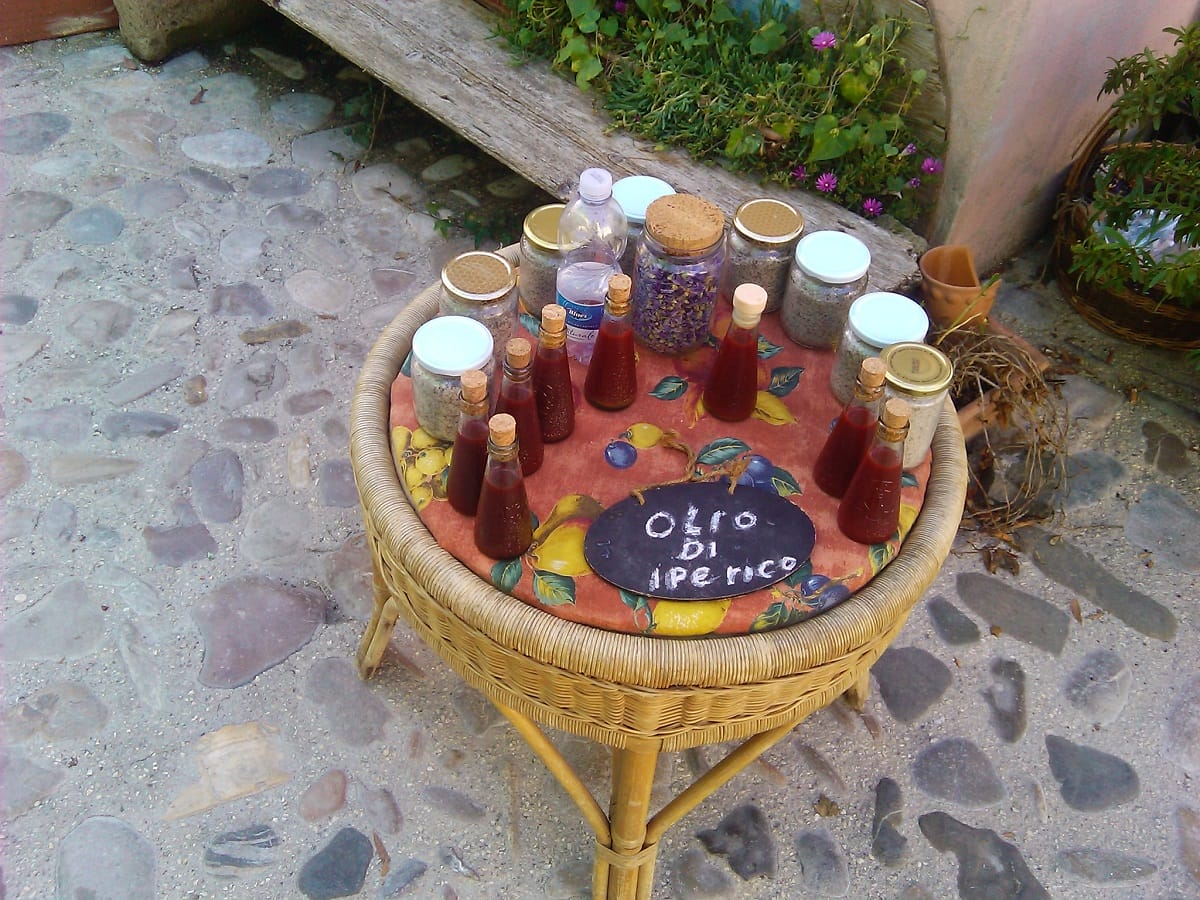
As you stroll around the winding streets, feel free to buy some of the locally-made products such as oil comprised of juniper berries, salt and Olio di Iperico (St John’s Wort). Photo credit: Luigi De Spiccins
Today you can stroll the narrow lanes of the village, which are flanked by art galleries and shops selling locally made crafts. If you’re lucky, you’ll meet an artist and she or he will invite you into their studio.
Some of the very successful artists who call Calcata home, include sculptor and digital artist Costantino Morosin, chef and mosaic artist Pancho Garrison, writer and painter Simona Weller, painter Romano Vitali, Dutch marionette maker Marijcke van der Maden, painter Gian Carlo Croce, and Athon Veggi—a writer, painter, and Egyptologist who lives in a cave on the side of the village with a dozen crows. They’ve all put Calcata on the artistic map.
The village of freaky relics
Calcata is also on the weird relics map. In 1527, a German soldier turned up in Calcata. He’d just taken part in the legendary Sack of Rome, led by Holy Roman Emperor Charles V who marched down the Italian peninsula with tens of thousands of Spanish troops and German mercenaries. He promised them booty when they breached the walls of Rome. And that’s exactly what happened. This German soldier swiped a precious reliquary from the Sancta Sanctorum and began making his way north to Germany, his potential retirement in the form of that reliquary stowed away in his bag.
But he was taken prisoner near Calcata and thrown in a cave cell in the village for the time being. After a short period, he was released but he hid the reliquary in the cell. Fast forward 30 years. It’s 1557 and a priest was poking around that same cave when he discovered under a pile of manure and hay, the reliquary that the German soldier had hid.
After opening the container, the village authorities realized they’d re-discovered one of the most precious relics in Christendom that had gone missing during the 1527 Sack of Rome: the foreskin of Jesus. What made the unusual relic so treasurable was that, if you were a believer, it’s the only piece of flesh Christ could have conceivably left on Earth—”la carne vera sacra,” or “the real holy flesh.” The pope at the time, Paul IV, stated that since fate had brought the relic to Calcata, there it should remain.
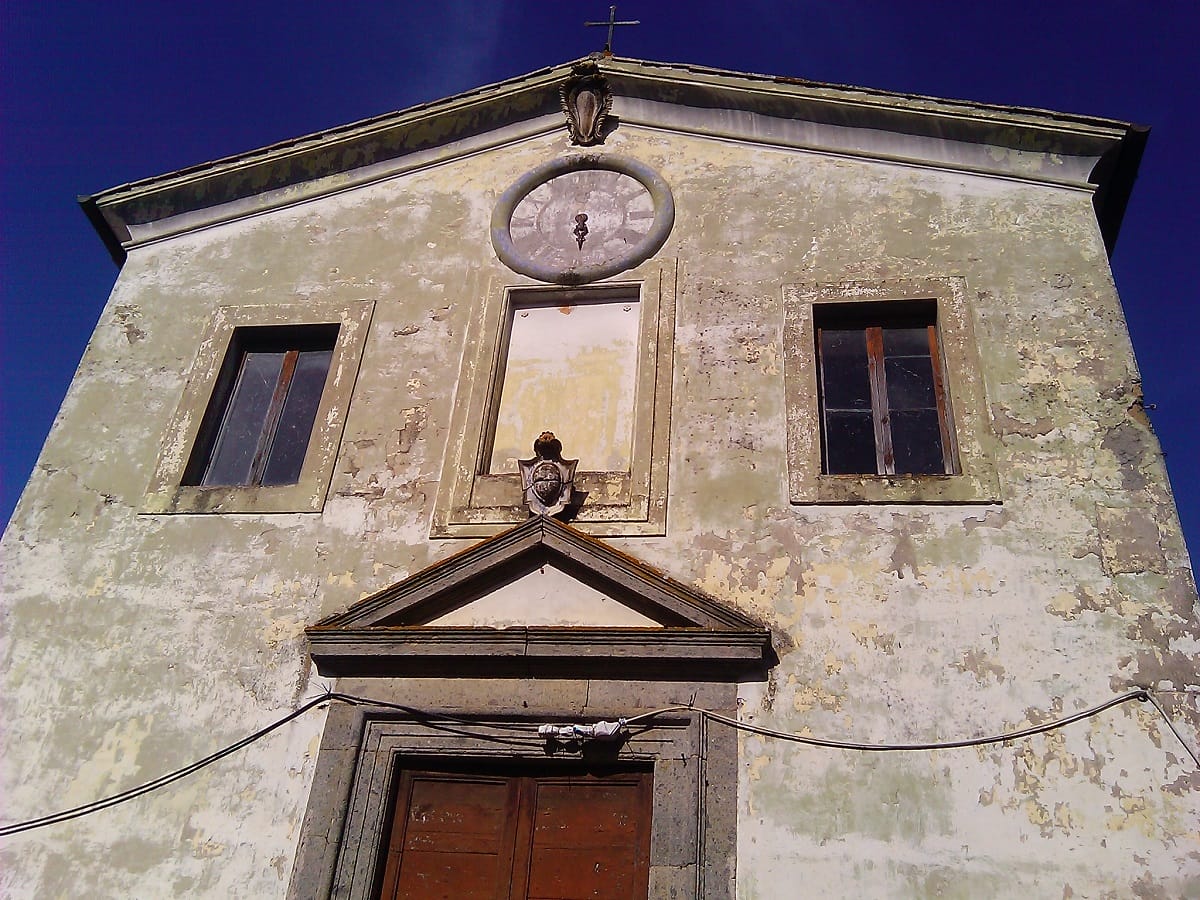
After its discovery, the Holy Prepuce was kept in the 14th century Chiesa di Santissimo Nome di Gesù – Church of the Most Holy Name of Jesus. Photo credit: Luigi De Spiccins
And that it did, luring many pilgrims to the village. Several popes throughout the succeeding centuries granted plenary indulgences—reducing a soul’s time in purgatory—to anyone who came to venerate the Santissimo Prepuzio, or Holy Foreskin in Calcata. That is, until the late 19th century when the Church eventually grew uncomfortable with people praying to such a curious relic.
In 1900, as the story goes, Pope Leo XIII made a decree stating that anyone who spoke or wrote of the Holy Foreskin would face excommunication. Still, though, the relic continued to be worshiped in relative obscurity as there wasn’t even a paved road to Calcata until the 1950s. And then in 1983, the local priest, one Don Dario Magnoni, announced to his flock that the relic had been stolen by “sacreligious thieves.”
Since then, no one really knows where the relic is. Some people have speculated that Satanists or neo-Nazis stole it. The priest blamed it on a couple from Turino (or Turin) which has a reputation for its occult beliefs. Others believe the priest himself sold it. Many locals, though, have a strong belief that the Vatican itself is to blame for its disappearance.
The Best Day Trip from Rome
Despite the disappearance of the weird relic, Calcata is still one of the best day trips from Rome. In the surrounding regional park, Valle del Treja, there are a few lovely hiking trails. On Saturdays and Sundays many of the local artists are hanging out on the main piazza. Also on weekends, the church doors are open for you to see the nook above the altar where the Holy Foreskin was kept. And sometimes the Baronial Palace is open for people to explore. Art galleries, craft shops and restaurants are open Friday to Sunday evening.
Check out our top tours for exploring Rome
Where to Eat in Calcata
- Il Guazzabuglio: A charming restaurant run by a young couple, Il Guazzabuglio can roughly be translated as “the mess.” The food is anything but. The menu changes with some frequencies depending on seasonal ingredients but expect standout pasta dishes here.
- La Grotta dei Germogli: This cool spot, otherwise known as the “Cave of the Sprouts,” is literally housed in a cave in the village of Calcata. This excellent vegan restaurant has been open since the ‘90s. Local artist Pancho Garrison has bedecked the interior with his wonderful mosaic work.
- La Piazzetta: One of the oldest restaurants in Calcata, the “Little Piazza” is actually located on a diminutive plaza within the tangle of medieval lanes in Calcata. The food here is consistently solid and includes plenty of pasta options, as well as, secondi such a roast chicken and grilled pork chops.
- Opera: Situated on the main square in Calcata, female-run Opera is the best place in town to feast on homemade pasta and inspired sweets while watching the action of Calcata on a weekend night. They also rent suites in the village for those who want to spend the night.
- Terra Mia: Located just outside of the walls of the village, Terra Mia is run by a hard-working couple who successfully serve a succulent taste of Tuscia, the sub-region for which Calcata is a part of. Think ravioli with locally found truffles and homemade fettuccine with wild boar ragù.
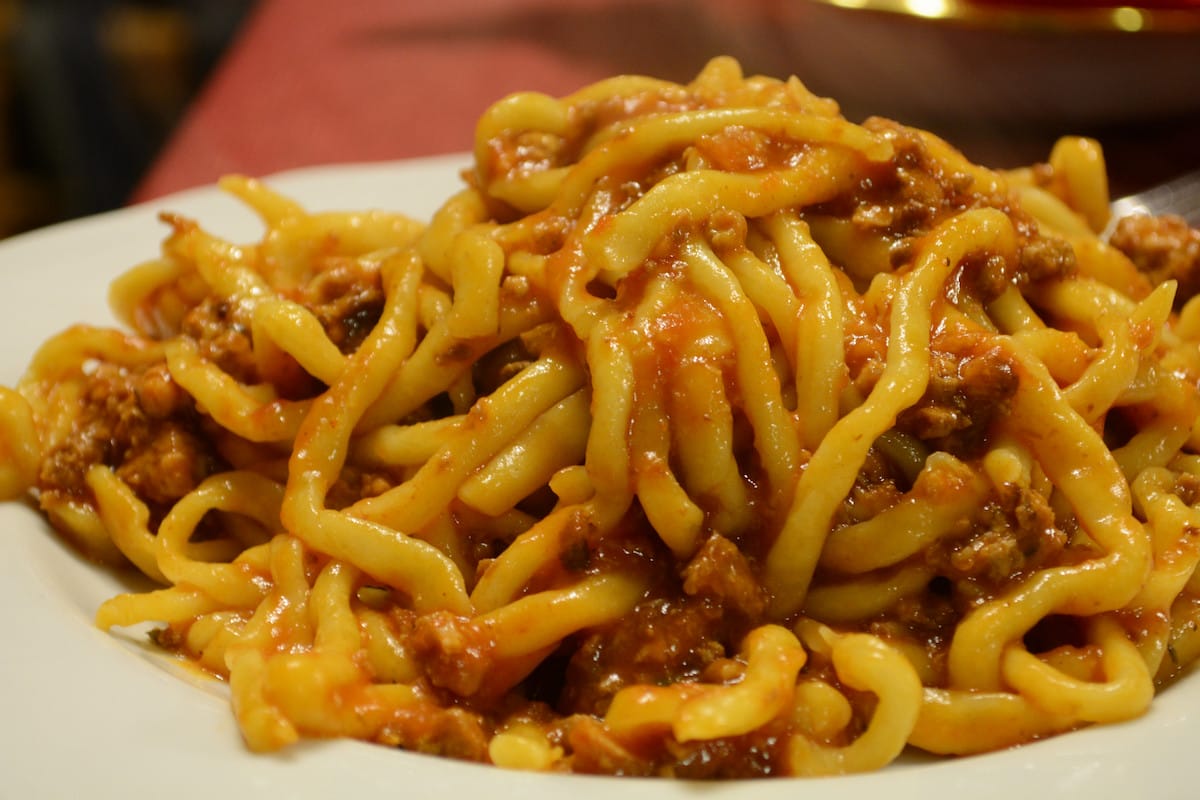
Wild boar ragù is a local treat. Photo credit: Pug Girl
The Best Time to Visit Calcata
And if you’re wondering when’s the best time to visit this bohemian oasis, the answer is easy: spring through autumn. Summer is the best, as more businesses, including restaurants, tend to remain open during weekdays. Otherwise, the weekend is your best bet. Friday through Sunday are the main days when Calcata is most alive.
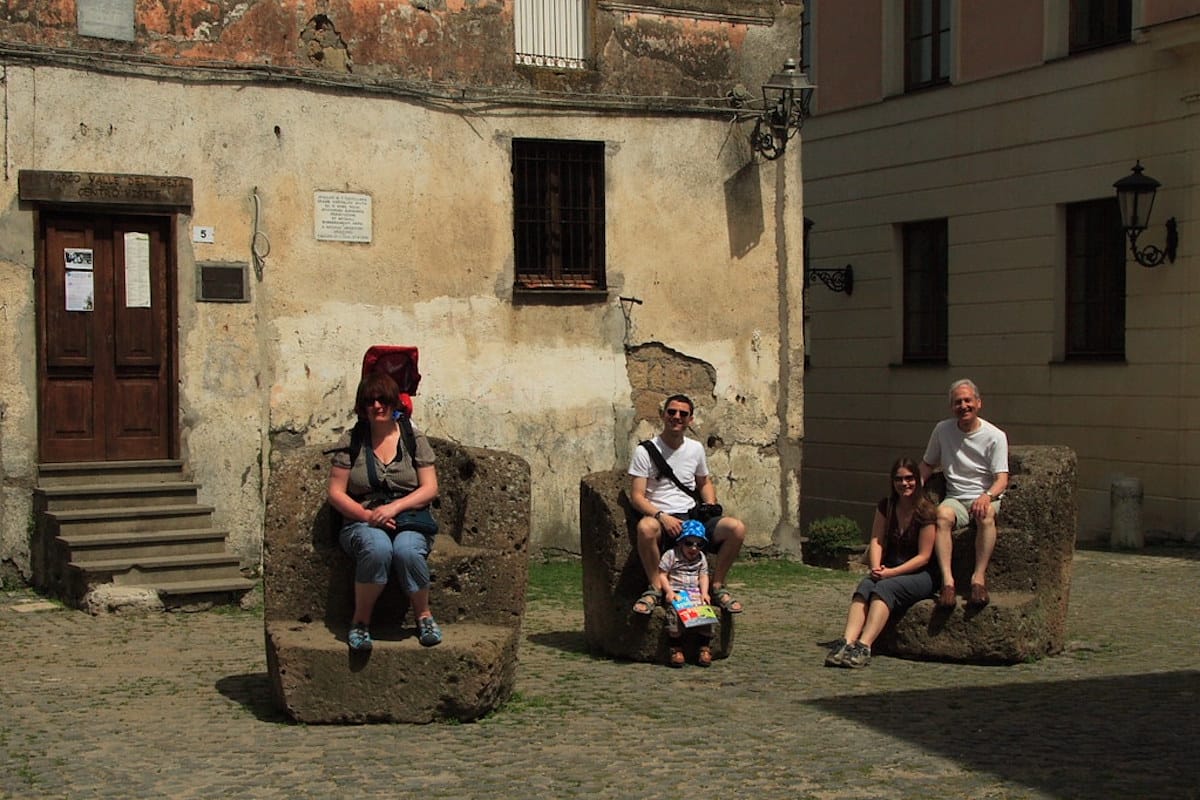
Truthfully, there’s no real bad time to visit Italy. Photo credit: Paul Albertella
Whether you’re looking to explore more off-the-beaten-track sites like Calcata, Italy or hoping to learn how to make true Italian pasta from a local chef, we’ve got you covered. Check out our top tours for exploring Rome.
by David Farley
View more by David ›Book a Tour

Pristine Sistine - The Chapel at its Best
€89
1794 reviews

Premium Colosseum Tour with Roman Forum Palatine Hill
€56
850 reviews

Pasta-Making Class: Cook, Dine Drink Wine with a Local Chef
€64
121 reviews

Crypts, Bones Catacombs: Underground Tour of Rome
€69
401 reviews

VIP Doge's Palace Secret Passages Tour
€79
18 reviews

Legendary Venice: St. Mark's Basilica, Terrace Doge's Palace
€69
286 reviews









